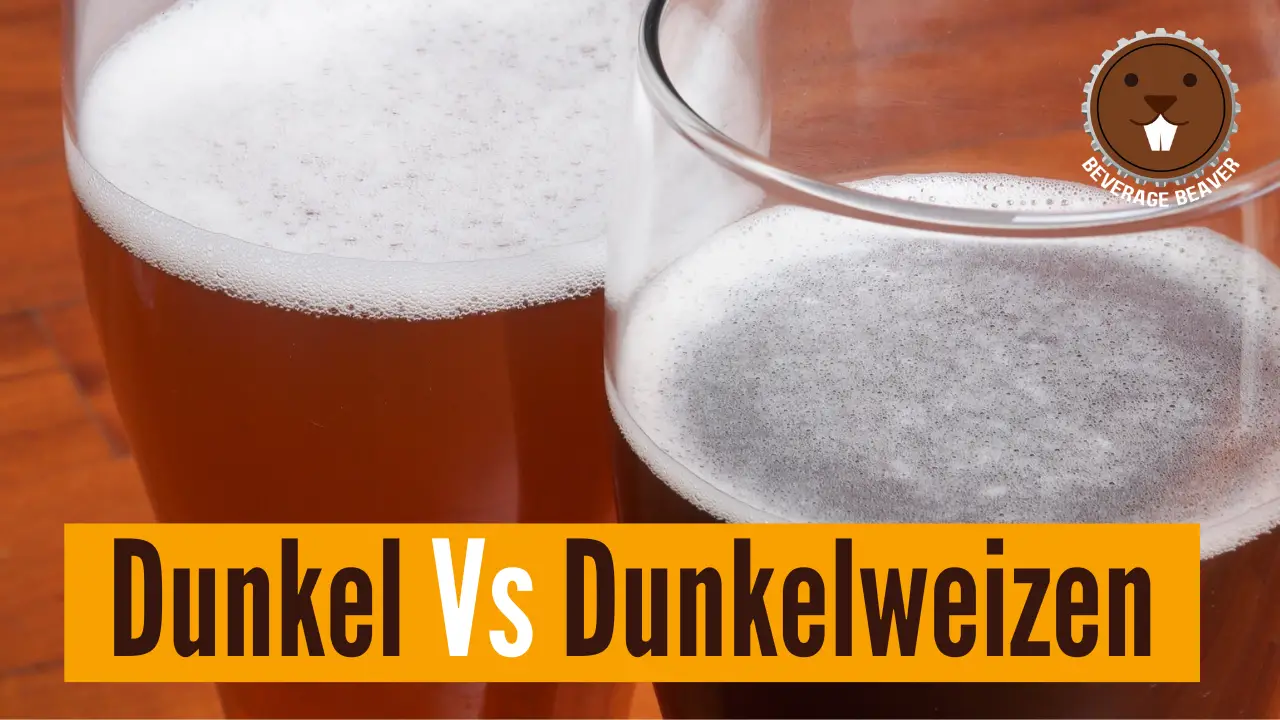Dunkel Vs Dunkelweizen: The Surprising Differences Between These German Dark Beers
If, like me, you’re a fan of German beer, then you’ve probably come across Dunkel beer and Dunkelweizen beer. Both of these beers include the German word ‘dunkel’ which means ‘dark,’ which is indicative of the dark hue that both these beers exhibit. Although these two beer styles have some things in common, they are in fact distinct beer styles. In this article, we’ll look at Dunkel vs Dunkelweizen and explain how these are different.
Dunkel Vs Dunkelweizen: Beer Style
Dunkel, a revered classic from Bavaria, is a dark lager known for its rich, malty sweetness complemented by subtle, balancing hop bitterness. Its color can range from a deep copper to a dark brown, often with a ruby red hue. The flavor profile is dominated by notes of chocolate, caramel, and toasty malts, with little to no roasted or burnt character. The beer is characterized by a medium body and a smooth, clean lager finish, typically with moderate alcohol content.
Dunkelweizen, on the other hand, is a dark wheat beer that combines the malty richness of Dunkel with the fruity and spicy characteristics of a traditional German Hefeweizen. Its color is a cloudy brown due to the yeast and wheat proteins, and its flavor is a complex mix of banana-like esters, clove-like phenols, bready wheat, and sweet, caramelized malts. Dunkelweizen is medium-bodied with a creamy texture and features lively carbonation, often with a slightly higher alcohol content than a standard Hefeweizen.
Dunkel Vs Dunkelweizen: Alcohol Content
Dunkel and Dunkelweizen beers both generally feature moderate alcohol by volume (ABV), with Dunkel typically ranging from 4.5% to 5.6% and Dunkelweizen slightly higher, around 4.8% to 5.7%. These ranges can vary with specific brews, but both styles maintain a balance that allows their distinct flavors to shine without being overshadowed by alcohol.
Examples Of Each Beer Style
Dunkel Examples
- Altbairisch Dunkel: A traditional Bavarian dark lager, this beer is known for its rich malt complexity with notes of caramel and a hint of chocolate.
- Paulaner Original Münchner Dunkel: One of Munich’s oldest breweries, Paulaner’s Dunkel offers a balanced flavor profile with malty sweetness and hints of toasted bread and nuts.
- Warsteiner Premium Dunkel: This internationally recognized brand’s Dunkel variety is known for its smooth, rich taste with a slightly sweet maltiness and a clean, crisp finish.
- Hofbräu Dunkel: From one of Munich’s historic breweries, this Dunkel balances a slight hop bitterness with the roasted, sweet flavors of malt.
- Barock Dunkel: Brewed by one of the world’s oldest monastic breweries, this beer offers a robust dark malt flavor with a creamy mouthfeel and a slightly sweet aftertaste.
Dunkelweizen Examples
- Weihenstephaner Hefeweissbier Dunkel: From the world’s oldest brewery, this Dunkelweizen combines the classic banana and clove notes of their Hefeweissbier with the malty richness of darker roasted malts, providing a unique and flavorful profile.
- Franziskaner Hefe-Weissbier Dunkel: This offering from Franziskaner is a rich and malty beer with the characteristic fruity tones of a traditional Hefeweizen, accompanied by the toasty flavors and caramel notes from the dark malts.
- Erdinger Weissbier Dunkel: Erdinger’s version of a Dunkelweizen offers a chocolatey, malty taste that complements the typical wheat beer sweetness and light hop bitterness, creating a balanced and smooth drink.
- Ayinger Urweisse: An amber-colored wheat beer, Ayinger’s Urweisse has a fruity aroma, a full-bodied, spicy palate, and a slightly bitter finish, making for a complex and traditional experience.
- Schneider Weisse Original (TAP7): While not extremely dark like other Dunkelweizens, it has a darker, amber hue and combines malty sweetness with balanced fruity flavors, typical of wheat beers, offering a harmonious taste with both freshness and tradition.

